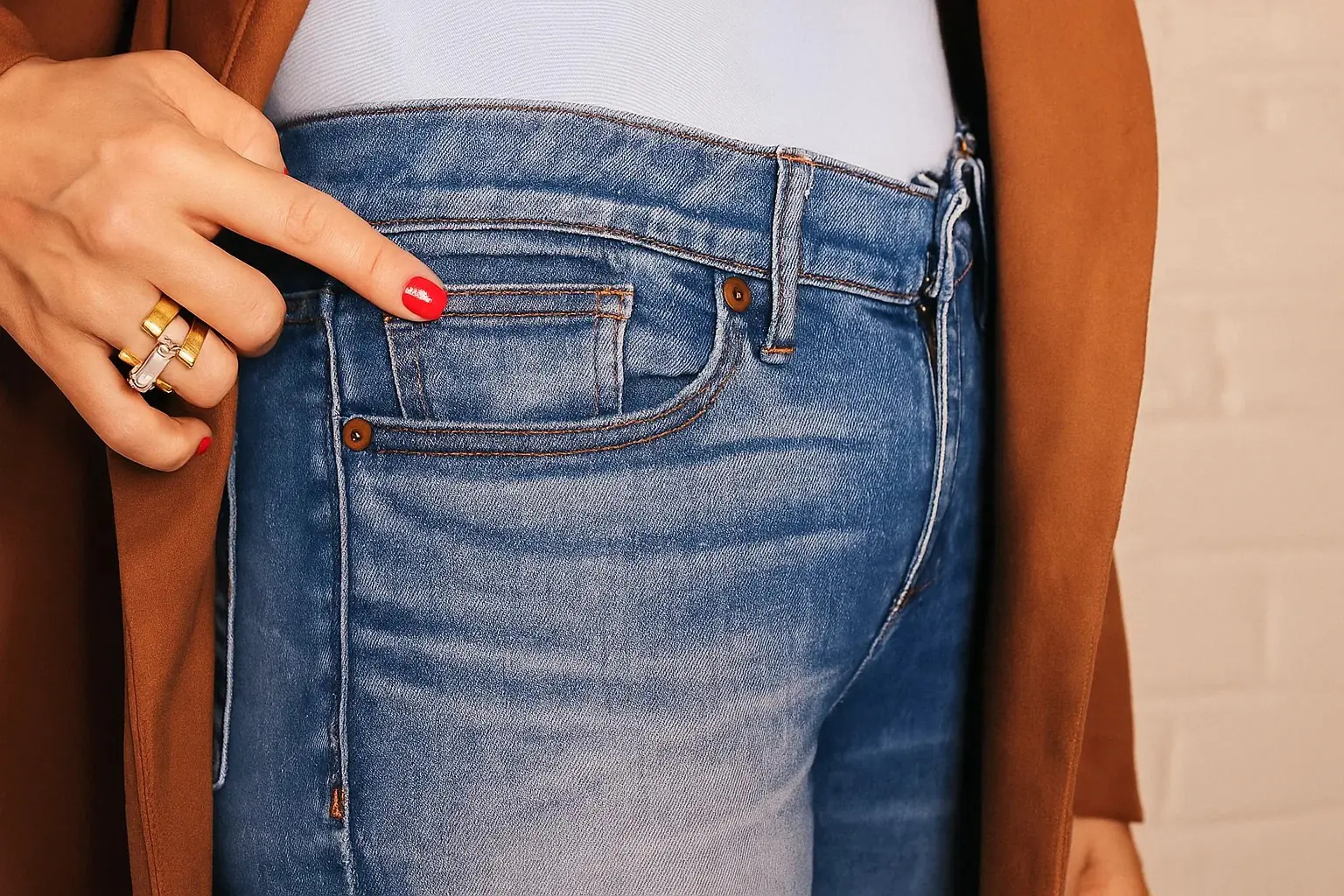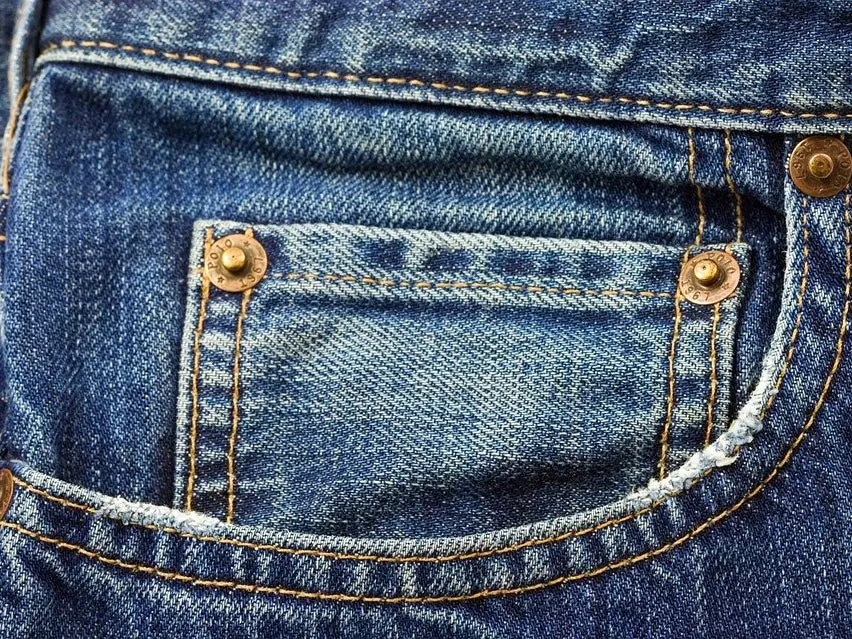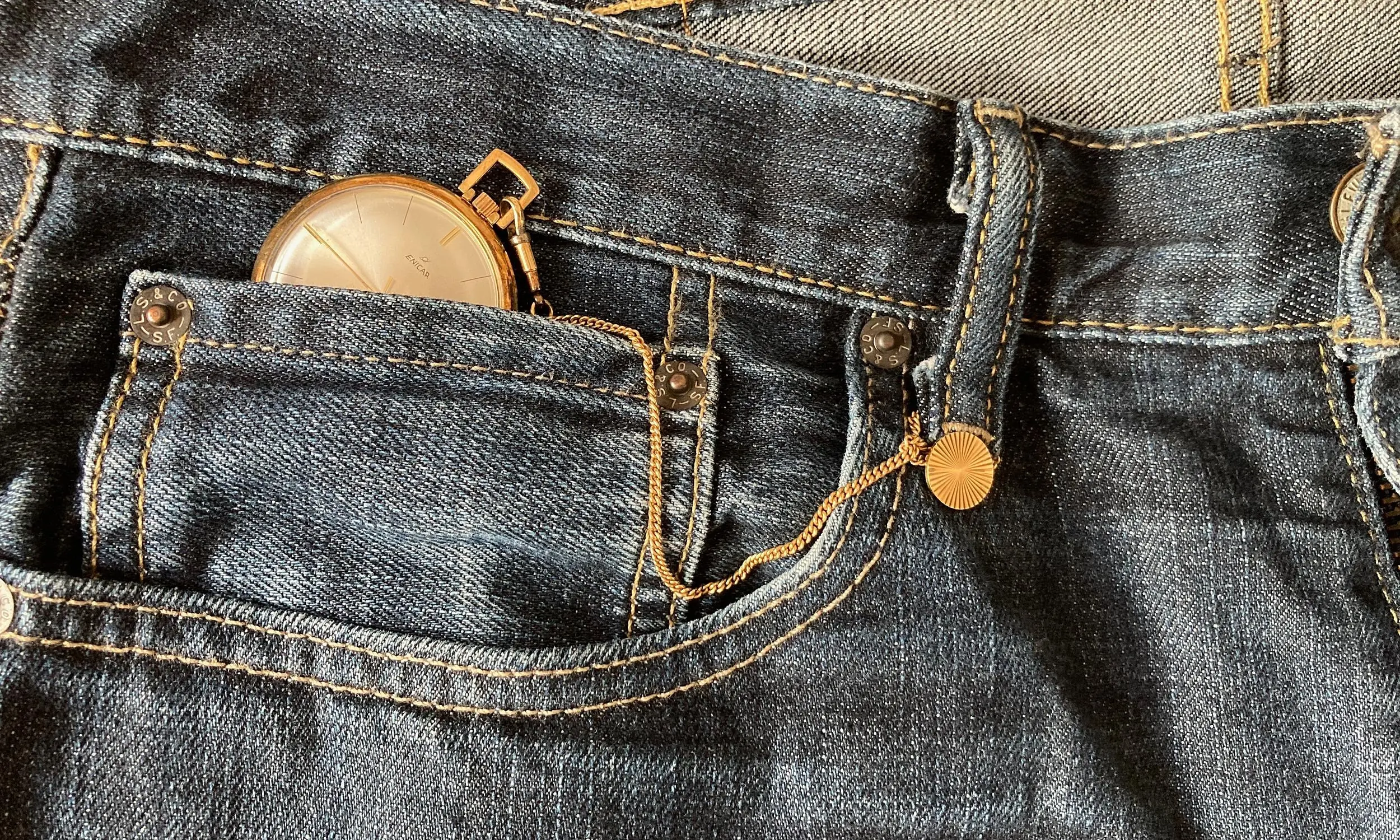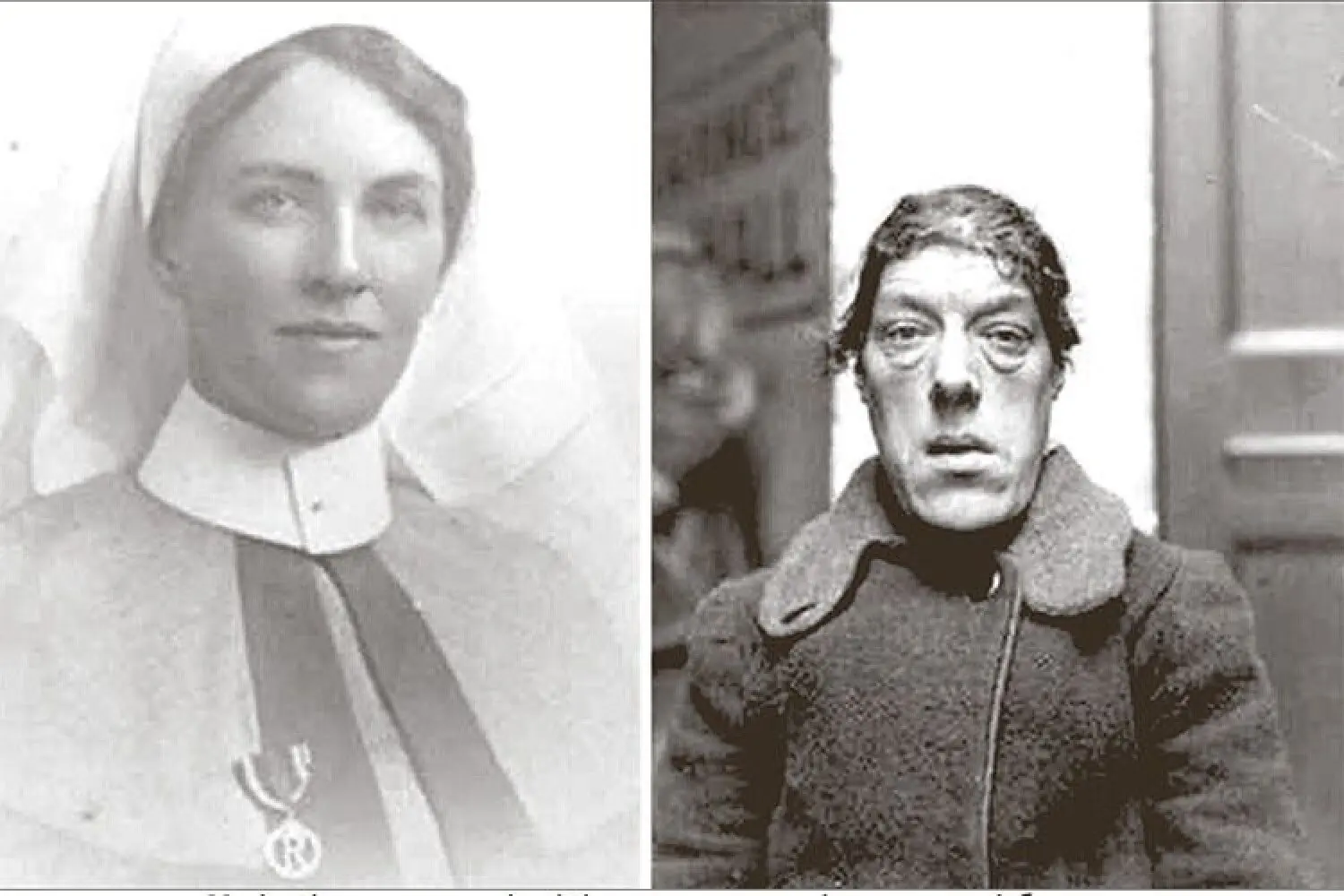
Most people will go their entire life without ever knowing why there's a small pocket inside your jeans pocket
Jeans are one of the most widely worn and instantly recognizable clothing items in the world. From casual Fridays to fashion runways, their versatility and durability have made them a wardrobe essential for people of all ages and backgrounds. But even as millions slip into their favorite pair daily, most people will go their entire life without ever knowing why there's a small pocket inside your jeans pocket.
That tiny inner pocket—usually found tucked neatly into the front right pocket of most jeans—often goes unnoticed or is simply used to store coins or small trinkets. But its story runs much deeper and dates back to the 1800s.

A Practical Invention from a Rugged Era
The origins of jeans can be traced to the American West in the 19th century, when there was a strong demand for durable clothing for miners, railroad workers, and cowboys. Jeans were originally workwear designed to endure the toughest conditions, crafted from sturdy denim and reinforced with rivets for extra strength.
The innovation was the brainchild of Jacob Davis, a tailor, and Levi Strauss, a German immigrant and dry goods supplier. Their collaboration gave birth to the iconic denim trousers we now know as jeans. The use of indigo dye not only provided that classic blue color, but also helped mask stains—an important feature for laborers.

The Birth of the Tiny Pocket
As utilitarian as jeans were, every feature was intentional—including the tiny inner pocket. Designed as a pocket watch compartment, it offered a snug, secure place for 19th-century men to safely stow their most prized possession: the pocket watch.
These watches were often attached to a chain and worn on a vest, but for men in the working class, wearing a vest wasn’t always practical. So this tiny pocket became a smart alternative. It kept the watch from getting scratched or damaged during hard labor and also helped prevent it from getting tangled with other tools or objects carried in larger pockets.
Levi’s has confirmed the original purpose in their own company documentation, stating that “the watch pocket was first added in the late 1800s to protect pocket watches, which were a popular item at the time.”

Symbolism and Legacy in a Changing World
As fashion evolved, so did the use—and the meaning—of jeans. In the 1950s, jeans shifted from utilitarian gear to cultural symbol, thanks in large part to figures like James Dean and Marlon Brando, whose rebellious personas captured the imagination of an entire generation. Jeans became a visual shorthand for defiance, youth, and nonconformity.
Even as the functionality of many design elements faded with time, that tiny watch pocket remained. No longer essential, it evolved into a symbolic feature, a nostalgic nod to jeans’ humble beginnings. Despite no longer serving its original purpose, it became an enduring aspect of denim design, bridging the past and present.
Modern Uses and Adaptations
Today, you’re unlikely to find someone carrying a pocket watch. Yet, the mini-pocket still finds practical use. People often store coins, USB drives, keys, concert tickets, lighters, or even guitar picks in it. Some even use it as a small hiding spot for emergency cash.
Designers continue to include this small pocket in both men’s and women’s jeans—not out of necessity, but as a subtle tribute to the rich heritage of denim. “Even though it’s rarely used for its original purpose, it stands as a reminder of craftsmanship and functionality,” says fashion historian Lucy Hargrove. “In an era where fashion often prioritizes appearance over function, this little pocket offers a quiet story of purpose and design.”
Why It Matters Today
In the age of fast fashion, details like the tiny jeans pocket offer a glimpse into the origins of clothing we often take for granted. It shows how form once followed function—and how some traditions endure, not because they are needed, but because they matter.
This little feature has survived massive cultural, technological, and social shifts. From gold mines to boardrooms, from rebellion to runway, jeans have remained relevant for over 150 years—and so has their tiniest detail.
So, next time you reach into your front pocket and feel that tiny stitched compartment, remember: it’s more than just an extra flap of fabric—it’s a small but mighty piece of fashion history.
News in the same category


Optical illusion reveals whether you’re an introvert or extrovert

Trapped in Silence: Boy Awakens After 12-Year Coma With Terrifying Secret
Imagine suddenly being trapped inside your own body—fully conscious, aware of your surroundings, but completely unable to move, speak, or communicate in any way. For Martin Pistorius, this unimaginable scenario was reality for more than a decade. His st

Urgent warning issued to all iPhone users following release of iOS 18.6

Experts Warn of Imminent 'Cosmic Hell' That Could Wipe Out Mankind, Exact Time Revealed
Though the ending is billions of years away, the emerging evidence is shifting scientific consensus on cosmic fate. Understanding dark energy—the force shaping expansion—is one of the greatest unsolved mysteries in physics.

Ancient tablet has been completely translated and has some terrifying predictions for humanity

Astronaut Waves And Turns His Camera To Disprove The Flat Earth Theory For Good

Your iPhone’s Volume Buttons Are Loaded with Hidden Features

Astronaut shares the profound ‘big lie’ he realized after seeing the Earth from space

Some people are only now realizing what the “WC” sign stands for on washrooms

NASA responds after scientist warned 'hostile alien threat' could attack Earth in just months

TerrIfying Study Links Everyday Household Chemical to Over 350,000 De@ths Worldwide
Experts urge immediate global action after new data uncovers staggering cardiovascular risks tied to everyday plastic-softening chemical.

How Often Should Men Ej@culate Each Month? Sh0cking Harvard Study Reveals a Powerful Link to Pr0state Health
It’s not often that something enjoyable turns out to be good for your health - but in this case, it just might be.

On August 2, The Skies Will Darken for 6 minutes-Earth’s Longest Total Solar Eclipses In A Century Is coming in 2027!

Scientists install the world’s first electronic spine to restore movement after paralysis.

Unplug These 5 Kitchen Appliances Before Bed to Prevent a Fire, Experts Warn

People Are Only Now Learning The Horrifying Explanation For Why The Titanic’s Wreckage Has No Remains

Chaos as cruise ship passengers 'left behind' following major tsunami in Hawaii

Urgent warning issued to all iPhone users following release of iOS 18.6

Skywatchers Delight: Dual Meteor Showers And Upcoming Celestial Events
News Post

Man Folded In Half Stands Straight After 28 Years

What Does it Symbolize When a Person Who Passed Away Shows up in Your Dream?

Mary Ann Bevan: The Tragic Story of the ‘World’s Ugliest Woman’

Pressure Points in Your Feet: Use This Foot Massage Chart for Pain Relief

8 Ways To Get Rid Of Phlegm And Mucus In Chest And Throat

Missing MH370 aircraft ‘found’ after Google Maps search

Doctor Reveals Surprising Thing That Occurs When You Don’t Eat – and It’s The ‘Opposite’ of What Most People Think

10 Signs You May Have Kidney Disease

This is what sleeping on the left side does for our brain, stomach & glymphatic health

The Last Day Of Life On Earth Has Been Calculated By NASA, This Is How Long We Have Left

Optical illusion reveals whether you’re an introvert or extrovert

Calls for popular smartphone to be banned from planes after another device catches fire

Trapped in Silence: Boy Awakens After 12-Year Coma With Terrifying Secret
Imagine suddenly being trapped inside your own body—fully conscious, aware of your surroundings, but completely unable to move, speak, or communicate in any way. For Martin Pistorius, this unimaginable scenario was reality for more than a decade. His st

Urgent warning issued to all iPhone users following release of iOS 18.6

Experts Warn of Imminent 'Cosmic Hell' That Could Wipe Out Mankind, Exact Time Revealed
Though the ending is billions of years away, the emerging evidence is shifting scientific consensus on cosmic fate. Understanding dark energy—the force shaping expansion—is one of the greatest unsolved mysteries in physics.

This Is What Happens When You Eat Too Much Sugar—#7 Will Sh0ck You!
Learn to recognize the red flags of sugar overload before it sabotages your health

Ancient tablet has been completely translated and has some terrifying predictions for humanity

Man Releases Chilling Never Seen Before Footage of Twin Tower Collapse

Heart Surgeon Reveals 4 Foods You Should ‘Always Avoid’ That Will ‘Poison’ Your Body
